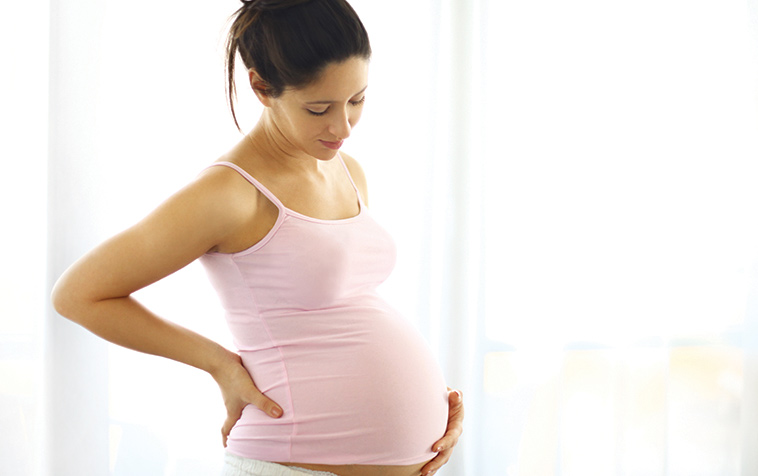
Labour & Birth
Most asked questions
Braxton Hicks are contractions, which tone the uterus but do not dilate (open) the cervix. They occur throughout your pregnancy but you may not feel them until the second trimester and may usually feel more in the third trimester.
Braxton Hicks contractions or tightening are referred to as a tight feeling in your abdomen, which may be quite strong and uncomfortable and are often called ‘false labour;. These contractions can be distinguished from real labour; as they may disappear with a change of position, taking away gravity (side lying) or activity such as a warm bath or shower. They will not last long or develop a regular pattern, but they come and go sporadically. There is a lot of physicality and sensation related to normal growth and change in pregnancy. However, if you are unsure about what you are feeling it is best to discuss this with your care provider.
All uterine activity (tightenings and contractions) originate from the muscles at the top of the uterus (the fundus). Where women ‘feel’ this activity is largely influenced by what the muscles are trying to achieve, i.e contractions are often felt low and Braxton Hicks a general tightening all over (from top to bottom) the uterus.
A birthing partner may be your partner, a family member or a friend. Who-ever the trusted person is that you would like with you during labour and birth they can support you emotionally, physically and act as an advocate for you. It is a great idea to discuss prior to labour what your birth plan is and any specific requests that you would like. It is also a good idea that your birthing partner goes with you to antenatal classes and does some research of their own into labour and birth so that they have an understanding of the journey.
Physically, partners can guide you through breathing and relaxation techniques. As well as this they may be able to support you with massage, get the birthing pool filled and heat up heat bags. Encouraging you to stay hydrated and reminding you to go to the bathroom is also really helpful.
Birthing partners can give you reassurance and encouragement and be that familiar voice. Being an advocate is a helpful role in a birth partner as often while a woman is in labour she may find it difficult to process information and make decisions. Writing down your birth preferences, hopes and fears before labour can be a great way of starting this conversation with your partner/support person and caregivers.
Birthing partners should consider their limits- if you feel faint at the sight of blood, let the doctor or midwife know, sit down if you feel unwell. You may be asked if you would like to cut the umbilical cord or catch the baby- be proactive in telling your caregiver if you do or do not want to take part in these things.
More questions
Every hospital has its own policies around recommendations from their professional bodies. Check with your hospital or birthing unit, as many are recommending limiting the time spent in hospital after your baby is born. If you and baby are doing well, you may be discharged to the safety of your own home. Each case will be examined as to the situation at home prior to discharge. The goal of your caregivers is to protect and promote yours and your baby/babies health.
RANZCOG recognises that there is limited information regarding the use of nitrous oxide in labour. Concerns relate to cleaning, filtering, and potential aerosolisation in the setting of COVID-19. Given these considerations, RANZCOG advises a cautious approach i.e. that nitrous oxide should not be routinely provided to women who are defined as suspected, probable or confirmed for COVID-19 infection. If nitrous oxide is used in this setting then all exposed staff should wear appropriate PPE, as determined by the local health jurisdiction. Nitrous oxide may still be offered to women at low risk of COVID-19, as deemed appropriate by the doctor or midwife.
Check with your individual hospital about their policies.
*This information is current at time of publication*
Check with your individual Hospital, Clinic or Birthing Centre, as each institution may run a little differently. Routine antenatal investigations, ultrasounds, maternal and fetal assessments are still essential. It maybe appropriate for some appointments to be discussions over the phone to limit your social contact, however Telehealth calls will not replace all antenatal care appointments. If you are concerned at all, please phone your doctor or midwife to discuss
The mode of birth should not be influenced by COVID-19. If you are healthy, and your baby are doing well, your birth plan can and should still be followed. If you are suspected or are a confirmed positive for COVID-19 then your midwives and medical team will use appropriate personal protective equipment whilst caring for you. Two options likely to be excluded from your care are, the use of Gas (Nitrous Oxide) and water birthing. All birth facilities and hospitals have implemented new screening procedures and protocols to limit potential expose to their staff, visitors and all patients. It is worth contacting your birthing facility or hospital to become aware of what has changed to help protect you and your baby.
There is no evidence that caesarean birth or induction of labour is necessary to reduce the risk of vertical transmission (from mother to baby). If a woman has the COVID-19 virus, or has had significant exposure, unless there are immediate risks to her health, or other obstetric indications, elective caesarean birth or induction of labour should be delayed, if possible.
In Australia, where the prevalence of COVID-19 is relatively low, RANZCOG has recommended that where possible, pregnant healthcare workers be allocated to low-risk areas to reduce their risk of exposure. It does not currently advise cessation of all clinical work in the third trimester, but urges employers to be sensitive to the fact that pregnant women are, appropriately, often anxious about their own health and protective of their unborn baby. Where a healthcare worker has concerns, consideration should be given to them working from home or taking a leave of absence.
The chance of a newborn baby getting COVID-19 appears to be very low.
There is limited data surrounding babies with COVID-19, but as their immune system is still immature, the risk of disease severity might be a little greater than compared to an older child. Human to human transmission is how the baby is most likely to become infected, but they don’t appear to be at an increased risk of complications from the infection.
Rupture of the membranes is known colloquially as "breaking the water" or as one's "water breaking”
In about 1 in 12 pregnancies, the fetal membranes around the baby will break and the amniotic fluid leak or drain before labour begins. This most commonly happens at term (after 37 weeks), but it is possible for the waters to break earlier in pregnancy. If a woman is known or suspected to have broken the waters, she should contact her hospital or place of birthing and speak to a midwife as it is important that a careful assessment is made i.e to come into the hospital or to monitor things at home). Sometimes it is not clear that the waters have actually broken, and additional tests might have to be done to find the answer. The amniotic fluid or water is usually clear or pale yellow. There is no pain or discomfort associated with the membranes rupturing spontaneously (that is it doesn’t hurt).
For women whose ‘water break’ before labour many will begin to labour spontaneously with 24 hours.
For most pregnant women, their ‘waters’ will break during the course of labour and sometimes not until their baby is actually being born. So although it can happen before any obvious contractions are felt it is more common to be a part of the progress of labour. Amniotic fluid (your waters) has a subtle smell that is very different to the smell of urine or your normal vaginal discharge. Questions that your Doctor/Midwife can ask over the phone may help to build an accurate clinical picture.
If you are known to carry the bacteria, group B streptococcus (GBS) and your ‘waters break’ before labour you will be treated with antibiotics to help reduce the chances of your baby becoming unwell. It is also likely recommended that your labour is induced. A discussion about the pros and cons will happen between you and your caregivers.




